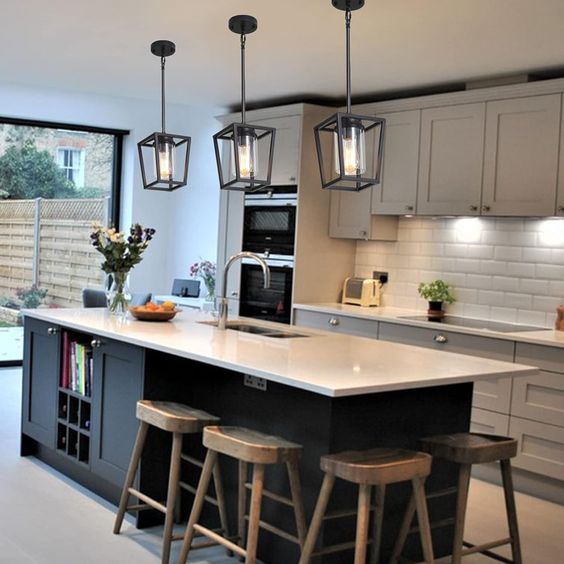
Expanding your living space is a big decision, whether you need more room for a growing family, want a dedicated office, or are looking to generate rental income. The two most popular options for homeowners are building an Accessory Dwelling Unit (ADU) or expanding their existing home. But which of these is more cost-effective? In this blog, we’ll break down the cost of ADU, benefits, and potential returns of ADUs and traditional home expansions to help you make the best choice for your needs.
Understanding ADUs and Traditional Home Expansions
What is an ADU?
An Accessory Dwelling Unit (ADU) is a secondary housing unit built on the same lot as a primary residence. ADUs can take various forms, such as detached units, garage conversions, or basement apartments. They offer a separate living space with its own entrance, kitchen, bathroom, and sleeping area. ADUs are increasingly popular due to their flexibility, potential for rental income, and ability to accommodate family members.
What is a Traditional Home Expansion?
Traditional home expansion involves adding new rooms or extending existing spaces in your primary home. This can include building a new bedroom, extending a kitchen, or adding an entire second story. Home expansions blend seamlessly with your existing structure, maintaining the home’s aesthetic and flow.
Cost Comparison: ADU vs. Traditional Home Expansion
Cost of Building an ADU
- Initial Construction Costs: Cost of ADU typically ranges from $100,000 to $300,000, depending on size, design, and location. Detached ADUs are generally more expensive than garage conversions or basement apartments due to the need for new foundations, utility connections, and separate roofing.
- Permitting and Fees: Permitting costs of ADU can vary significantly by location but typically range from $5,000 to $15,000. Some areas have reduced fees or expedited processes to encourage ADU construction.
- Utility Hookups and Infrastructure: Connecting an ADU to water, electricity, and sewer lines can add another $10,000 to $30,000 to the project cost, especially if the ADU is detached and requires new lines to be laid.
Cost of Traditional Home Expansion
- Initial Construction Costs: Home expansions usually cost between $200 to $400 per square foot. A simple room addition might cost between $50,000 to $150,000, while adding a second story can range from $150,000 to $300,000 or more, depending on complexity.
- Permitting and Fees: Permits for traditional expansions can cost $5,000 to $20,000, depending on the scale of the project and local regulations.
- Structural Modifications and Updates: Expanding a home often involves modifying existing structures, such as reinforcing foundations, updating roofing, and reconfiguring electrical or plumbing systems. These adjustments can add significant costs, sometimes exceeding $50,000, particularly in older homes.
Long-Term Value and Return on Investment
ADU Return on Investment
- Rental Income: ADUs can be a great source of rental income, potentially earning $1,500 to $3,000 per month, depending on location and amenities. This income can help offset the initial construction costs of ADU and provide a steady revenue stream.
- Increased Property Value: An ADU can increase your property’s overall value, with estimates suggesting a 20-30% boost in home equity, especially in high-demand areas where additional living spaces are valued.
- Flexibility and Adaptability: ADUs offer versatile use cases, from housing aging parents to creating a home office or guest suite. This flexibility can enhance your property’s appeal to potential buyers.
Traditional Home Expansion Return on Investment
- Enhanced Living Space: Expanding your home can significantly improve your quality of life by adding more usable space, whether it’s a larger kitchen, an extra bedroom, or a new living area.
- Increased Property Value: Traditional home expansions can also increase your property’s value, often yielding a 50-80% return on investment, particularly if the addition is well-integrated with the existing structure and boosts the home’s functionality or aesthetics.
- Customization: Expansions allow for highly customized spaces that align perfectly with your family’s needs and preferences, which can be a strong selling point.
Timeframe and Disruption
ADU Construction Timeframe
- Time to Build: Building an ADU generally takes 6 to 12 months from planning to completion, including permitting, design, and construction phases.
- Disruption: Since ADUs are often separate from the main home, construction disruptions are minimized. You can continue living in your home relatively undisturbed while the ADU is being built.
Traditional Home Expansion Timeframe
- Time to Build: Home expansions can also take 6 to 12 months, but this varies greatly with the complexity of the project. Adding a simple room might be quicker, while a full second-story addition could take over a year.
- Disruption: Expanding your home often involves significant disruptions, including noise, dust, and potential temporary relocations, especially for extensive projects like second-story additions or major kitchen remodels.
Zoning, Regulations, and Permits
ADU Regulations
- Zoning Laws: ADUs are subject to specific zoning laws that vary widely by location. Some areas encourage ADUs with relaxed regulations, while others have strict guidelines on size, setbacks, and occupancy.
- Permits and Approvals: Obtaining permits for ADUs can be a relatively smooth process in cities with supportive ADU policies, but it can also be time-consuming and complex in areas with more stringent regulations.
Traditional Home Expansion Regulations
- Zoning Laws: Home expansions must comply with local zoning laws, which can restrict the height, size, and placement of additions. These rules are typically more straightforward than those for ADUs but still require careful planning.
- Permits and Approvals: The permitting process for home expansions can be extensive, especially if the project involves structural changes or exceeds local building codes.
Which Option is More Cost-Effective?
Factors to Consider:
- Initial Budget: If you have a tighter budget, ADUs may be more cost-effective due to their generally lower initial costs compared to large-scale home expansions.
- Long-Term Goals: Consider whether you are looking for rental income or simply more space for personal use. ADUs offer the potential for income generation, while home expansions provide customized living space enhancements.
- Resale Value: Both options can increase your property’s value, but the impact varies based on local market conditions. In areas with high demand for rental units, ADUs may offer a better return on investment. Conversely, in markets where larger homes are highly valued, traditional expansions might be more beneficial.
- Lifestyle Impact: Consider the level of disruption you’re willing to endure. ADUs are generally less intrusive during construction, whereas home expansions can significantly impact daily life.
Cost-Effectiveness Summary:
- ADUs are typically more cost-effective if your goal is to generate rental income, add flexible living space, or work within a modest budget. The lower initial costs, potential for rental income, and property value boost make ADUs an attractive option for many homeowners.
- Traditional Home Expansions may be more cost-effective if you need highly customized space, want to significantly alter your home’s layout, or are in a market where larger homes command higher prices. Though often more expensive upfront, the investment in living space tailored to your needs can offer substantial returns.
Conclusion
Deciding between an ADU and a traditional home expansion ultimately comes down to your budget, long-term goals, and personal preferences. ADUs offer flexibility, potential rental income, and generally lower costs, making them an attractive option for many homeowners. On the other hand, traditional expansions provide tailored living space enhancements and can substantially increase your home’s value and functionality.
By carefully weighing the costs, potential returns, and impacts on your lifestyle, you can make an informed decision that best suits your needs. Whether you choose an ADU or a home expansion, both options offer valuable opportunities to enhance your living space and investment in your property.

